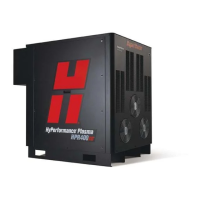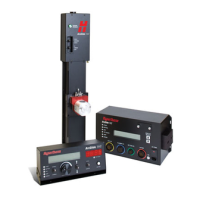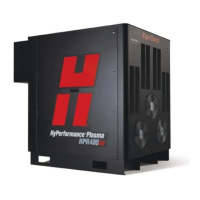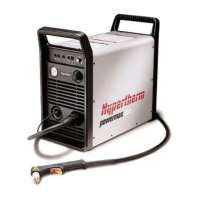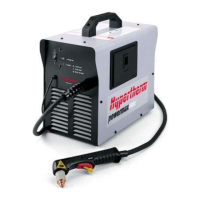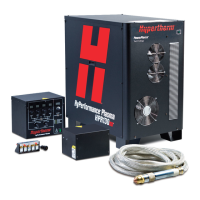6
First segment and geometry limitation
A geometric limitation was found during the development of
the dogleg method that resulted in a “Kerf Too Large” CNC
error message. This limitation had to do with the length of
the first segment approaching the 60-degree corner of the
dogleg (refer to the first segment, highlighted in green, in
Figure 7 on page 7).Essentially the first segment length has
to be long enough that, at a minimum, the kerf right-hand
side enters this segment.For the 6 inch (150 mm) thickness
the minimum length is 0.589 inches (14.96 mm) or
First Segment =
where K is kerf and α is angle.
Assuming 60 degrees, the minimum length of the first
segment would have to be:
• 0.459 inches (11.66 mm) for 5 inches (125 mm) stainless
steel, based on 0.530 inches (13.46 mm) kerf
• 0.607 inches (15.42 mm) for 6.25 inches (160 mm)
stainless steel, based on 0.700 inches (17.78 mm) kerf
It is recommended that a value larger than the minimum
length be used to allow minor adjustments to the kerf value
(for part dimension adjustment) without causing a geometric
“Kerf Too Large” error.
Second and third segments
It was found that an increased speed during the second
segment was useful to minimize the time it takes for the arc
to reattach to the opposite side of the kerf, which minimizes
any voltage spikes. Therefore, for the second segment the
feed rate should be increased to 400% of the cut speed,
after which, during the third segment, it should be slowed
down to 115% of the cut speed. This last section of the
move (or third segment) is where the tab will finally be
melted. Table 2, together with Figure 7, summarizes the
parameters for stainless steel thicknesses of 5 inches
(125 mm), 6 inches (150 mm), and 6.25 inches (160 mm).
K
2
α
2
---
tan
-------------------------

